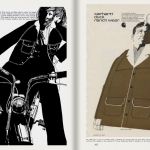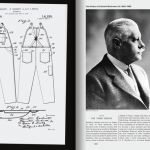
Short analysis of Carhartt WIP's success
Waiting for the book celebrating the brand
October 24th, 2016
When I was a teen, some of my friends were skaters. I remember that, among all the brands behind their oversized hoodies and wasted jeans, only one ruled: Carhartt WIP.
The iconic orange “C” on beanies, sporty coats and t-shirts, wasn't just a logo, it was an identifying mark among young people who shared the same sport, the same passion and, above all, the same desire to escape from everyday routine and stand out from the crowd. It was a symbol that represented a lifestyle, rather than a clothing label.
That “C” was a symbol and it still is. For this reason, the company has launched The Carhartt WIP Archives, a monograph dedicated to the brand, edited by Michel Lebugle and Anna Sinofzik, with texts by Gary Warnett and Mark Kessler. The book, published by Rizzoli, concerns more than 350 exclusive photographs, artworks and unseen drawings from company's archive, but also quotes from key figures and collaborators who have joined the brand over the years. So, it's a journey into the Carhartt WIP's universe, aimed to show how the label has become a real emblem of underground culture.

In fact, the publication starts with Carhartt WIP's birth, in 1989, when the Edwin Faeh's Work In progress joined the Carhartt USA, a clothing company born in Michigan 100 years earlier. Since that moment, the brand, based in London, has always had that street attitude that's distinctive of Carhartt, which, born as a clothing line for men working in mines and rail road tracks, had also struck the cities' crowds thanks to its anti-fashion imagery.
This unconventional spirit has strengthened over time, ending with attracting young subcultures which have elected Carhartt WIP as a streetwear symbol. It's no accident that the history of the brand has bound to Mathieu Kassovitz's cult-movie La Haine: the famous "C"-logo branded beanie appears on one of the movie's characters, making the success of the brand official among young people from Parisian suburbs.

Another important moment for the brand's affirmation amongst young subcultures was in the summer of 2011, in London, when one of Carhartt WIP's stores was destroyed during a series of riots in Hackney. The masses in revolt looted the outlet, stealing a lot of the brand's clothes. However, the company saw that act as a kind of affirmation into the underground communities: the fact that Carhartt WIP was chosen to be robbed could be interpreted as a gesture of appreciation, a compliment to the company's work. Paraphrasing the event, Carhartt WIP became a brand worth robbing for its clothes. For this reason, some time later, the brand released a t-shirt with a photo of that looting.

But Carhartt WIP conquered also the love of music world, by gaining the appreciation from international artists of Rap/Hip Hop scene from Tupac to Kanye West. Also within the world of luxury fashion, the brand has been able to conquer respect and esteem from well established brands. The several collaborations with famous fashion houses are a proof, like those with Junya Watanabe, Undercover by Jun Takahashi and the most recent with Vetements, that included the brand into its multi-collaborations collection.
From suburban American workers to the success on Vogue, Carhartt WIP has always been the symbol of street culture, a synonym for nonconformity and youth rebellion.
The book The Carhartt WIP Archives, aavailable from November 4, wants to pay a tribute to the revolutionary spirit of a brand that for years has known and mirrored the street life like noboby else.



























































